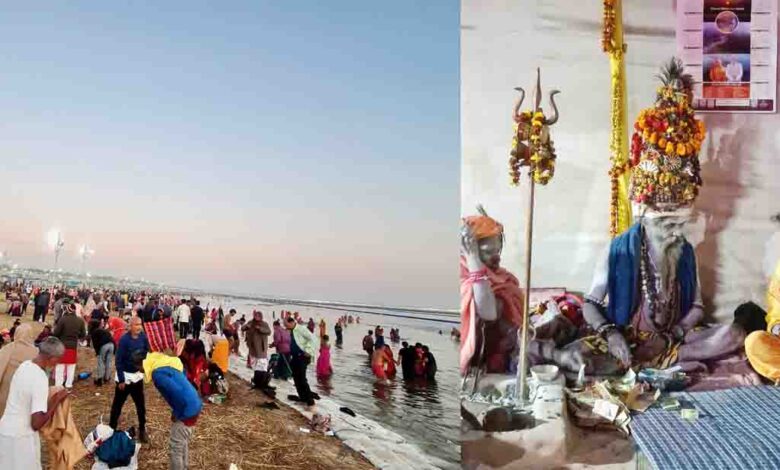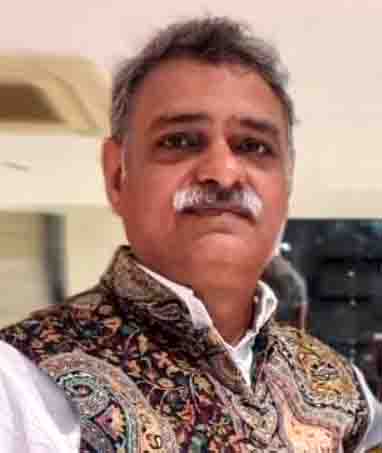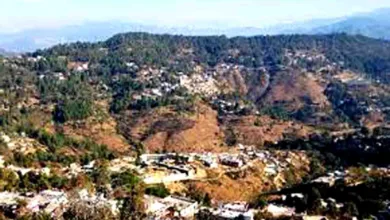From Mumbai to Prayagraj: Maha fulfilment at Maha Kumbh

GUEST COLUMN
 Rajan Pathak
Rajan Pathak
The Maha Kumbh is not just the largest religious congregation of the world but a wonderfully inclusive festival, welcoming in its expansive folds people from different strata of the society-from the ascetics to the affluent down to the pauper- going down in their millions for mukti from the Karma-driven cycles of birth and death.
To understand at first hand the long-enduring enigma lurking behind the Maha Kumbh, I drove down no less than 3,000 km with my family and friends towards Prayagraj. We embarked on this long journey to do good to our past three generations as well as the upcoming three generations under the belief that a deep dip in the divinely charged confluence known as Triveni Sangam during the Maha Kumbh, which occurs once in 144 years marking the conclusion of 12 Kumbh Mela cycles, brings spiritual salvation for ancestry and posterity alike along with the present generation.
Aside from the invisible spiritual factor which was the mightiest of all though, we were eager to see how this mammoth gathering was being managed on the ground.
Considering that we had a long journey ahead, we started quite early at 3:30 AM. There was another reason behind our early start-to skip Mumbai and Thane’s peak hour traffic pressure and consequent congestion. We had breakfast at the new Mumbai-Nagpur Samridhhi Express Highway. This expressway- an infrastructural marvel- enabled us to enjoy driving at the speed of 100-120 km per hour. This expressway has brought Nagpur and other cities of Maharashtra closer. It took us about nine hours to reach Nagpur.
Though enamoured of the road, I must say at the same time that the government should focus a little more on providing facilities for those driving down the expressway. Given our experiences, I would like to recommend that travellers should carry food with them. The food variety and general hygiene were found missing as compared with the Nagpur-Rewa highway which provides multiple options for food and public convenience every five to 10 km.
As we were driving on, we saw cars carrying people from several states like Andhra Pradesh, Telangana, Karnataka and Chhattisgarh besides Maharashtra speeding towards Prayagraj. We were pleasurably amazed to see saffron (the colour signifying salvation) flags fluttering atop these cars. After an overnight stop at Jabalpur, we reached Prayagraj in the afternoon the next day.
Once in Prayagraj, we found to our dismay that the VIP protocols had not been withdrawn as claimed by the government after Mauni Amavasya. The special protocols meant for VIPs being still in force made traffic get stuck frequently in the Mela premises. Roads were being closed multiple times to facilitate the movements of the ‘special guests’. Being strangers to the city, we found it difficult to navigate alternative roads to move on. As we kept hearing about traffic diversions over the public address system, we decided to hire a local authorised guide to escort us to the tent city and the ghat. We were able to drive down straight to the ghat only because we wisely chose the non-Sahi Snan days and weekdays.
We decided to stay near the ghat in the tent city sector 23 in the Arail area. The accommodation was reasonably good with an attached washroom and other facilities, but rates were exorbitant: Rs10, 000 to 15, 000 per tent for two people and Rs 3000 extra for an additional bed. The rates of other items, including food, were reasonable, but conveyance charges for short distances were pretty high.
The guide suggested that we should take the holy dip before 5:30 PM as boats were not allowed after that. He arranged three bikes for the six of us to be dropped at Arail Ghat for the boat ride. We were told that while the government-run boats charged Rs 300 per person the rate was Rs 2000 for the private boats. However, as soon as we reached the ghat at around 5 PM, the rate for private boats quite bafflingly soared up to Rs 10,000. It seemed as though everyone was out to earn some quick bucks out of the vulnerable pilgrims. And more sadly, the authorities seemed to be conniving with the loot unleashed. However, as we thought a little our anger melted into sympathy. The locals could not lose this opportunity to earn as much as possible. Anyway, we negotiated and finally one boatman agreed to charge Rs 5000.
Boats were seen everywhere in the Yamuna river ferrying pilgrims fantastically clad in saffron. It was the time of sunset and it seemed under the fading light as though Yamuna turned into a river of saffron.
The boat ghat stands opposite to Kila Ghat (Akbar Fort) and the pilgrims on the boats saw the fabled Vat-Vriksh half hanging from the fort. The boatman narrated the mythologies of Vat-Vriksh. The fort has a well called ‘Saraswati koop’ which is believed to be the source of the mythical Saraswati river.
We grew impatient to reach Triveni Ghat to take the holy dip and offer prayers. Finally, we alighted from the boat and landed on the Sangam Triveni ghat. Administration arranged a floating platform for the pilgrims to get down from boats. There, to our relief, we saw several makeshift changing rooms being cleaned at regular intervals. The ghat was over-brimming with pilgrims who, devotion-charged, were chanting ‘Har-Har Gange’ and ‘Har-Har Mahadev’. We took the holy dip when the sun was descending on the horizon casting a golden glow all over the sacred confluence. Amidst the atmosphere steeped into devotion, we performed puja and lit diyas. Triveni water was astoundingly clean and flowing despite the teeming millions taking daily the holy dip thanks to those working round the clock to keep it clean. Moreover, the authorities made sure that the depth remains three to four feet at the ghat to avoid mishaps.
Kumbh visit is incomplete without the akhara darshan and taking the sadhus’ blessing. We, however, could visit only three of the numerous akharas camping there because of the rule of not allowing visitors after 8.30 PM. We glimpsed the mystic India of yore while reverently observing the ascetics sitting in yoga mudras near smouldering dhoonis. They were occasionally applying sacred ash (Vibhuti) on their body, signifying the supremacy of the eternal Soul over the transient physical frames. They all had Rudrakash beads tucked in their unkempt hair (jaata), worn around their necks and wrists. We were as though transported into another realm where the material melts into the spiritual with a divine fragrance reigning in the aura-filled ambience. We all felt an urge-coming from somewhere deep inside- to surrender our being to the Supreme Being living within us, around us, above us. It was a fantastic experience. We felt as though we were cleansed of all sins committed knowingly or unknowingly with accumulated Karma wiped out. We will treasure this wonderful experience forever.
Now, let me conclude. One should visit on non- ‘Sahi-Snan’ days and weekdays to enjoy a hassle-free experience of Maha Kumbh. Our experiences on the whole are incredibly good. We must praise the administration for keeping the mela premises artistically decorated, superbly maintained and beautifully illuminated. The sanitation workers are silently and diligently carrying on their assigned errands; the medical staff remain sleepless to attend to the pilgrims’ requirements and the police personnel are unbelievably gentle, friendly and supportive. We returned, truly fulfilled.
(The author is the co-founder and managing director at Adapt Fintech Fintso. The views expressed are personal)






